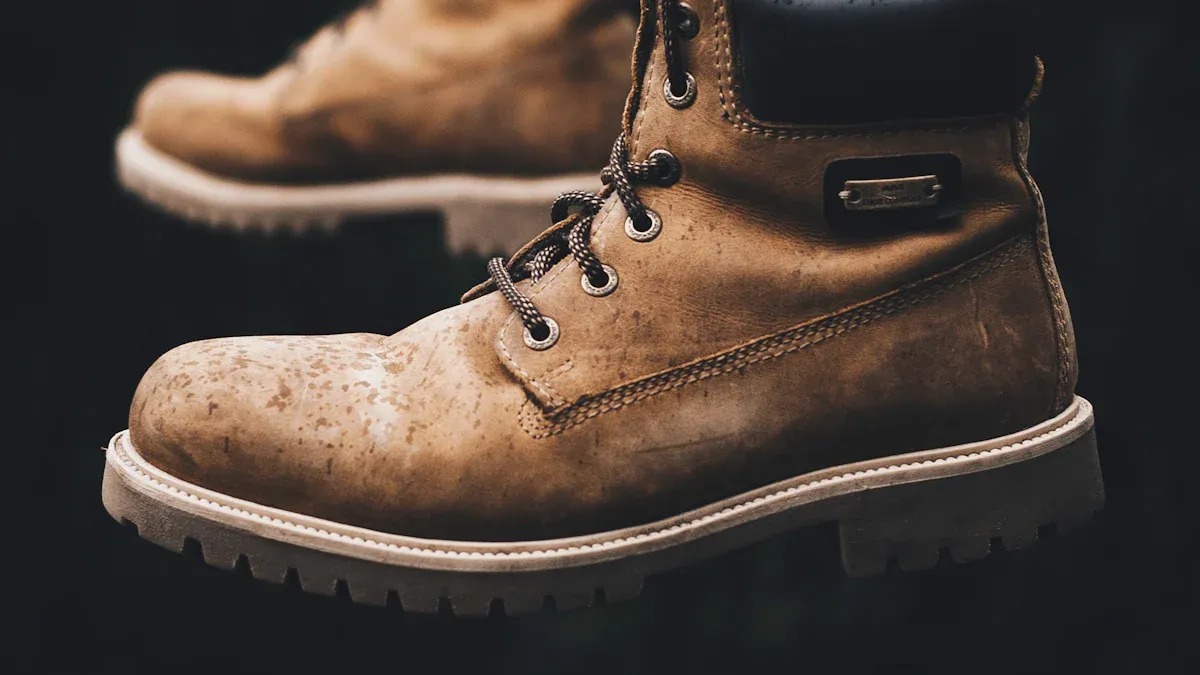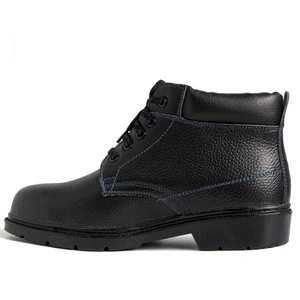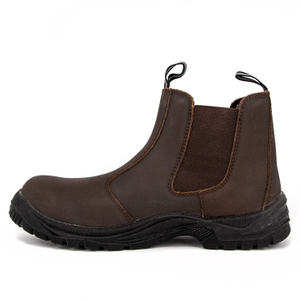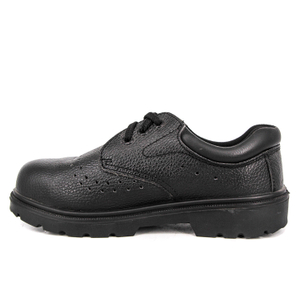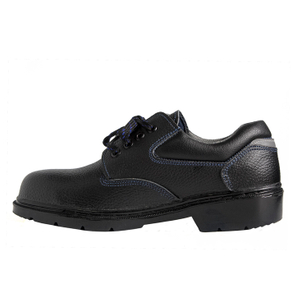Safety shoes protect workers from hazards at job sites. Safety shoe standards, such as OSHA and ASTM F2413, set requirements for impact and compression resistance. OSHA enforces safety footwear regulations in the U.S. and only references ASTM F2413 since 2005. ASTM sets detailed safety standards and certifications for labeling and testing. ANSI standards once guided safety regulations, but now ASTM rules apply. Some safety shoes still show ANSI markings, even though ANSI is outdated. EN ISO 20345 remains the main safety standard in Europe. Understanding safety standards and certifications helps workers follow safety regulations and choose compliant footwear.
Key Takeaways
Safety shoes must meet current standards like ASTM F2413-18 in the U.S. and EN ISO 20345 in Europe to protect workers from impact, compression, and other hazards.
Always check safety shoe labels for ASTM or CE marks to confirm they meet up-to-date safety requirements and avoid outdated ANSI labels.
Employers should assess workplace hazards carefully and choose safety footwear with the right protections, such as electrical hazard resistance or slip resistance.
Comfort and proper fit are crucial for safety shoe compliance and injury prevention, so offer a variety of sizes and styles to support workers.
Understanding and following safety standards helps reduce injuries, ensures legal compliance, and builds a strong safety culture at work.
Protective Footwear Standards
Protective footwear standards help keep workers safe in many industries. These standards set the safety requirements for safety shoes and safety footwear. They guide manufacturers and employers in choosing the right protective footwear for different hazards. The main protective footwear standards include OSHA, ASTM F2413 and F2892, and the EN ISO 20345 standard. Each standard has its own focus and testing methods.
Note: ANSI Z41 once served as the main U.S. safety standard. ASTM standards now replace ANSI Z41. OSHA recognizes only ASTM standards for compliance.
OSHA and Safety Shoes
OSHA sets workplace safety rules in the United States. It requires employers to provide protective footwear that meets current safety standards. OSHA does not create its own technical requirements for safety shoes. Instead, it enforces the use of ASTM F2413-18 as the main standard for protective footwear. OSHA ensures that safety shoes protect workers from impact and compression hazards. It also checks for compliance with optional features, such as electrical hazard (EH) and puncture resistance.
Employers must select safety footwear that matches the hazards present in their workplace. OSHA inspectors look for clear labeling on safety shoes to confirm compliance. They do not accept outdated ANSI Z41 labels. Only ASTM F2413-18 certified footwear meets OSHA's safety requirements.
ASTM F2413 and F2892 Standards
ASTM sets the technical standards for safety footwear in the United States. ASTM F2413-18 covers protective footwear with a protective toe cap. ASTM F2892 covers non-toe protective footwear, such as soft-toe work shoes. Both standards require third-party testing and clear labeling.
Key requirements for ASTM F2413-18 include:
Impact resistance: The protective toe cap must withstand up to 75 pounds of force.
Compression resistance: The toe area must resist compression from objects weighing up to 2,500 pounds.
Optional protections: Metatarsal guards, electrical hazard resistance, puncture resistance, and conductive properties.
ASTM F2413-18 labels show the year, gender, and protection levels. For example, a label might read:
ASTM F2413-18 M I/75 C/75 EH
This means the shoe meets the 2018 standard, is for men, and provides impact (I/75), compression (C/75), and electrical hazard (EH) protection.
Tip: Always check for the ASTM F2413-18 label. It proves the safety footwear meets current safety requirements.
The transition from ANSI Z41 to ASTM standards improved safety shoe compliance. ASTM standards require more rigorous testing, third-party verification, and clearer labeling. This change gives buyers more confidence in the safety and reliability of protective footwear.
Aspect | ANSI Z41 Standard | ASTM F2413 Standard (since 2005) |
Status | Original U.S. safety footwear standard | Superseded by ASTM F2413; current ANSI-recognized standard |
Testing Requirements | Less rigorous | Impact (200 joules), compression (2,500 lbs), optional protections |
Compliance Verification | Not always third-party tested | Mandatory third-party testing and labeling |
Labeling | ANSI Z41 label | ASTM F2413-XX (year) with protection ratings |
Regulatory Alignment | Older OSHA references | Aligns with OSHA and current U.S. safety expectations |
Practical Impact | May not meet current benchmarks | Improved clarity, reliability, and safety assurance |
EN ISO 20345 Standard
The EN ISO 20345 standard sets the main safety requirements for protective footwear in Europe and many other countries. It covers a wide range of hazards and includes more performance tests than U.S. standards. The EN ISO 20345 standard requires a protective toe cap that can withstand a 200-joule impact and 15 kN compression. It also tests for slip resistance, water resistance, and other features.
Safety footwear under the EN ISO 20345 standard must carry a CE mark. This mark shows that the footwear passed tests by an accredited laboratory and meets the EU's Personal Protective Equipment (PPE) Regulation. The CE mark gives buyers confidence in the safety and quality of the product.
Performance Criteria / Requirement | Description |
Toe Protection | Must protect against 200-joule impact and 15 kN compression |
Penetration Resistance | Protection against sharp objects piercing the sole (optional) |
Antistatic Properties | Footwear must dissipate static electricity (optional) |
Water Resistance | Resistance to water penetration (optional) |
Slip Resistance | Tested for grip on wet and dry surfaces |
Classification Codes | SB (basic), S1, S3, etc., indicating different feature sets and protections |
Testing Laboratories | Must be ISO/IEC 17025-accredited for certification testing |
CE Marking Requirements | Footwear tested and certified by a Notified Body under EU PPE Regulation (EU) 2016/425 can carry the CE mark |
Documentation for CE Marking | Includes technical files, test reports, risk assessments, declarations of conformity, markings, and user instructions |
Markings and Symbols | ISO-defined symbols must be legibly marked on the product |
Note: The EN ISO 20345 standard uses codes like SB, S1, and S3 to show different levels of protection. Always check the code and CE mark before buying safety shoes.
Comparing Key Standards
The table below compares the main protective footwear standards:
Standard | Scope and Focus | Key Requirements and Tests | Notes |
OSHA (via ASTM F2413-18) | U.S. regulatory context, enforced by OSHA | Impact and compression resistance for protective toe cap; optional EH and puncture resistance tests | OSHA requirements are included in ASTM F2413-18 |
ASTM F2413-18 | U.S. standard, technical details | Impact and compression resistance; optional tests for metatarsal, EH, puncture, conductive properties | Only specific protections can be claimed if tests are passed |
EN ISO 20345 | European/international standard | Broader tests: drop force, slip, ankle support, heat, water, insole abrasion, protective toe cap | More comprehensive; includes specialist footwear for specific risks |
Protective footwear standards help employers and workers choose the right safety shoes for their needs. OSHA, ASTM, and EN ISO 20345 standard all focus on protecting workers from hazards. Each standard uses different tests and labels, but all aim to improve workplace safety.
Safety Footwear Certifications
![Safety Footwear Certifications Safety Footwear Certifications]()
Certification Labels and Markings
Certified safety footwear always displays specific labels and markings. These markings help workers, employers, and inspectors confirm that the shoes meet required standards. Labels appear on the tongue, inside the shoe, or on the packaging. They show which tests the footwear passed and what protections it offers.
Most safety shoes in the United States carry astm labels. These labels replaced older ansi markings after the transition to new standards. Shoes that still show ansi codes may not meet current requirements. astm labels use a combination of letters and numbers to indicate protection levels. For example, a label might read ASTM F2413-18 M I/75 C/75 EH. This code means the shoe meets the 2018 astm standard, is designed for men, and provides impact, compression, and electrical hazard protection.
Tip: Always check the label before purchase. If the shoe only shows an ansi code, it may not comply with current safety regulations.
The table below lists common astm certification labels and what they mean:
Certification Label | Meaning |
I/75 | Impact resistance (75 ft-lb) |
C/75 | Compression resistance (2500 lbs) |
EH | Electrical hazard protection |
Mt/75 | Metatarsal protection |
PR | Puncture resistance |
SD | Static dissipative |
Cd | Conductive properties |
Safety footwear in Canada often uses CSA symbols, while European shoes display CE marks and EN ISO 20345 codes. Each region uses its own system, but all aim to show that the footwear meets strict safety standards.
Understanding CE and ASTM Labels
Buyers can use certification codes to match safety footwear to workplace hazards. astm and ansi codes focus on impact, compression, and optional protections. CE and EN ISO 20345 codes cover a wider range of features, including slip resistance and water protection.
The table below explains common certification codes and symbols found on safety shoes:
Certification Code / Symbol | Protection Provided / Meaning | Buyer Guidance |
CSA Green Triangle | Grade 1 toe, puncture-resistant sole, 125 joules impact | Use in heavy industries, risk of falling objects or sharp materials |
CSA Blue Rectangle | Grade 1 toe, no puncture resistance, 125 joules impact | Use where impact protection needed, no puncture risk |
CSA Yellow Rectangle with 'SD' | Static dissipative soles | Use where static discharge is a hazard |
CSA White Rectangle with Orange Omega | Electrical hazard protection, up to 18,000 volts | Use for electrical work |
Chainsaw Protection Symbol | Protection against chainsaw cuts | Use in forestry or chainsaw operation |
Composite Toe Protection | Lightweight, metal-free toe protection | Use for lighter weight, metal-free needs |
Steel Toe Protection | Standard heavy-duty toe protection | Use for force and compression hazards |
Steel Plate Protection | Sole puncture resistance | Use where sharp objects on ground present |
CE Mark | Meets European health, safety, and environmental standards | Indicates compliance with EU requirements |
ASTM Standards | American Society for Testing and Materials standards for protective footwear | Indicates compliance with US safety standards |
EN ISO 20345:2011 Ratings | SB: Basic toe (200J), S1: Antistatic, S2: Water resistance, S3: Penetration resistance, etc. | Select rating based on protection level and workplace hazards |
Slip Resistance Symbols | SRA: Ceramic tile, SRB: Steel plate, SRC: Both | Use where slip hazards exist |
Additional Codes | P: Penetration, A: Antistatic, C: Conductive, I: Insulating, WR: Water resistance, etc. | Match features to workplace risks and comfort needs |
Note: astm and ansi codes focus on impact and compression. CE and EN ISO 20345 codes add slip, water, and other protections. Always match the certification to the job's hazards.
Workers should look for the latest astm or CE markings. astm F2413-18 and astm F2413-24 are the most current US standards. ansi codes, such as ANSI Z41, no longer meet OSHA requirements. Shoes with only ansi labels may not provide adequate protection.
Safety shoes with proper certifications protect workers and help employers meet legal obligations. astm and ansi markings show compliance in the US, while CE and EN ISO 20345 codes apply in Europe. Understanding these labels helps buyers select the right safety footwear for every environment.
Choosing Safety Shoes
Assessing Workplace Hazards
Selecting protective footwear starts by identifying hazards in the work environment. Workers face risks from slips, trips, falls, falling objects, sharp materials, and electrical sources. Employers should check for oily floors, uneven surfaces, or exposed wiring. They must also look for heavy equipment or tools that could cause impact or compression injuries. Some workplaces have static-sensitive areas or chemicals that require special protection.
Tip: Regular hazard assessments help ensure that protective footwear matches current workplace risks.
A quick checklist for hazard assessment:
Slippery or uneven floors
Heavy objects or moving equipment
Sharp debris or puncture risks
Electrical hazards or static-sensitive zones
Chemical spills or wet conditions
Matching Standards to Needs
After identifying hazards, employers must match protective footwear to the correct standards. astm and ansi standards guide most U.S. workplaces. astm F2413 covers impact, compression, and optional features like electrical hazard protection. ansi standards, though outdated, still appear on some labels. Only astm-certified footwear meets current safety requirements for work boots.
The table below shows key factors and considerations:
Factor | Key Considerations |
Work Environment | Identify hazards: heavy objects, chemicals, electrical risks |
Toe Protection | Steel, aluminum, or composite toe caps for impact |
Environmental Resistance | Waterproof, chemical-resistant, slip-resistant soles |
Electrical Safety | Conductive or insulated soles for electrical zones |
Comfort & Fit | Arch support, cushioning, adjustable features |
Durability & Maintenance | Abrasion-resistant materials, easy cleaning |
Regulatory Compliance | astm, ansi, EN ISO certifications, EH-rated footwear |
Employers should choose steel or composite toe boots for impact risks. Chemical and water-resistant shoes work best in labs or wet areas. EH-rated footwear protects against electrical hazards. Only protective footwear that meets the right safety requirements for work boots can reduce injuries and ensure compliance.
Failing to select the correct standard can lead to injuries, legal penalties, and lost productivity.
Fit and Comfort
Fit and comfort play a major role in compliance and injury prevention. Workers wear protective footwear for long hours. Poor fit causes blisters, pinching, or fatigue, which discourages use. Companies that offer a range of sizes and styles see higher compliance. Digital foot measuring improves fit accuracy.
Employees prefer comfortable, well-fitting shoes.
A variety of styles increases satisfaction.
Easy access to replacements keeps compliance high.
Comfort features like cushioned midsoles and arch support reduce fatigue. Proper fit lowers the risk of foot injuries and helps build a strong safety culture. Employers who prioritize comfort and fit meet safety requirements for work boots and support worker well-being.
Understanding and following astm standards remains essential for workplace safety. Employers and workers benefit from astm-certified footwear, which protects against impact, compression, and electrical hazards.
astm standards require clear markings, making compliance easy to verify.
Proper fit and comfort, as required by astm, help prevent injuries and discomfort.
astm-certified footwear reduces risks from slips, trips, and falls.
Regular review of astm programs ensures ongoing protection.
astm-compliant selection supports regulatory compliance and lowers injury rates.
astm programs with real-time tracking improve safety culture and reduce costs.
Digital fitting technologies, used in astm programs, enhance protection.
astm-certified options offer traceability and reliability.
astm standards guide both employers and employees in choosing the right protection.
astm-certified footwear ensures organizations meet all safety requirements.
Always check for current astm certifications and match footwear to workplace hazards.
FAQ
What does the CE mark on safety shoes mean?
The CE mark shows that the footwear meets European safety, health, and environmental standards. It proves that a notified body tested the shoes. Buyers can trust that CE-marked shoes meet EN ISO 20345 requirements.
How can someone tell if safety shoes meet ASTM standards?
Look for a label inside the shoe. It should show codes like ASTM F2413-18 M I/75 C/75 EH. This label confirms that the footwear passed required impact, compression, and optional protection tests.
Why did ASTM replace ANSI Z41 for safety footwear?
ASTM standards use stricter testing and clearer labeling. They require third-party verification. ANSI Z41 no longer meets OSHA requirements. ASTM F2413 now sets the benchmark for safety footwear in the United States.
What do the codes SB, S1, and S3 mean on EN ISO 20345 shoes?
These codes show different protection levels.
Do all workplaces require the same safety shoe standard?
No. Each workplace has unique hazards. Employers must assess risks and select footwear that matches the correct standard. For example, electrical work needs EH-rated shoes, while construction may need S3 or ASTM F2413-certified boots.











